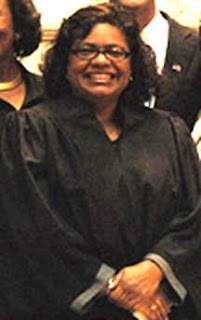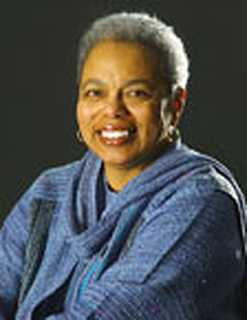COLUMBUS, Ohio - Researchers looking for differences in eating habits of African Americans based on whether or not they had Type 2 diabetes uncovered an unexpected result: No matter what the blood sugar level was, the dietary intakes were pretty much the same.
According to the study, the average diet of African-American adults is higher in carbohydrates and fat and lower in beneficial minerals and nutrients than are federally recommended for daily consumption. The researchers take that as a sign that culturally relevant nutrition education could benefit all black citizens because of their higher risk for diabetes and would be especially prudent for those already diagnosed with the disease.
African Americans are 1.8 times more likely to develop Type 2 diabetes and 1.4 times more likely to be obese than are non-Hispanic whites, according to federal health agencies. Obesity is a leading risk factor for development of diabetes, a condition that results when the body cannot properly use insulin to transfer sugar from the blood to muscle and fat cells that use glucose for energy.

Jonathan Scott | In general, the study showed that African Americans consume more fat and saturated fat than is recommended and lower-than-recommended levels of minerals associated with bone health - which can be compromised by diabetes.
Blacks with diabetes got about half of their total energy from carbohydrates, and their intake of whole grains was well below recommended levels. |
"This means people who do have the condition aren't doing anything different from when they didn't, and those who don't have the condition don't appear to be trying to prevent diabetes," said Jonathan Scott, a graduate student in medical dietetics at Ohio State University and lead author of the study.
"We still don't fully understand why some people get diabetes and some don't, especially if they're eating the same kind of diet. But what we can see from this study is that there is potential to use nutrition education to both improve the chances of preventing diabetes and other diseases and to help those with diabetes better manage the condition with some lifestyle changes."
The study is published in a recent issue of the journal Ethnicity & Disease.
The findings led Scott and his colleagues to assert that nutrition education materials that reflect black culture could help promote overall improvement in the diets of African Americans. Comprehensive nutrition education for diabetics is already hard to come by in the current health-care system, researchers say, and the materials available tend to be geared toward a homogeneous group of consumers eating a generic diet.
The researchers have used these findings to identify dietary habits to target in an intervention led by Leon McDougle, assistant professor of family medicine at Ohio State, with African Americans in central Ohio. The cultural specifics featured in the materials range from the inclusion of photos of African Americans to the acknowledgment that eating soul food is part of many black family traditions. Typically high in fat and calories, these foods can be modified or used in moderation rather than eliminated completely from the diet, Scott noted.
The researchers examined the dietary intake of 2,589 African-American adults recorded in the 1999-2004 National Health and Nutrition Examination Survey.
Scott and colleagues organized the research participants into three diabetes status groups with the goal of identifying whether having the disease appeared to influence eating habits among black adults.
The three groups studied were those with normal blood sugar levels, those with pre-diabetes and those with a Type 2 diabetes diagnosis. Pre-diabetes indicates elevated blood sugar levels that haven't crossed the threshold for an actual disease diagnosis. Among the participants, 1,863 had normal blood sugar levels, 321 were in the pre-diabetes range and 405 had diabetes.
Besides the findings of high consumption of carbohydrates and fat among the majority of African Americans in the study, the researchers did find a bright spot: Black adults with diabetes and pre-diabetes ate more dietary fiber than did participants with normal blood sugar.
Overall, however, the intake of nutrients recorded by the national study indicated the average African-American diet tended to be low on fruits, vegetables, whole grains and low-fat dairy, and high on meat and non-whole grains.
Christopher Taylor, senior author on the paper and assistant professor of medical dietetics at Ohio State, noted that the national survey represents a snapshot rather than eating trends over time.
"But the data shows that those with diabetes don't seem to be doing the things that we would educate them to do, such as controlling carbohydrates and eating more fruits and vegetables," Taylor said. "We also don't know why those with normal blood glucose levels are normal. They show up as having normal levels in the data, but that doesn't mean their blood sugar levels will stay normal."
Besides diabetes, the researchers noted another risk associated with these dietary habits: Among the African Americans surveyed, almost half - 44.6 percent of women and 49 percent of men - over age 20 had cardiovascular disease.
The researchers also could see from the data what else contributed to diabetes risk: For every one-year increase in age, there was a 7 percent greater likelihood that those studied would have diabetes, and for every centimeter increase in waist circumference came a 5 percent increase in the risk for having diabetes. The data also showed that as income increased, risk for diabetes decreased. For example, among the adults surveyed, if income rose from 100 percent of the federal poverty rate to 200 percent, the risk of having diabetes was cut by 14 percent.
Though dietary habits are just one likely contributor to a higher risk of disease, the researchers say nutrition is an important part of diabetes management that often goes unrecognized.
"Our health-care system in general isn't set up very well to provide nutrition counseling," Taylor said. "For the most part, individuals don't get access to a dietitian that is covered by their insurance. So the ability to get nutrition education out there and get people to change the habits they've had for so long becomes a barrier."
Taylor and Scott have partnered with Ohio State family medicine specialists to manage a community-based diabetes education program for African Americans living in central Ohio. The local and national projects inform each other, Taylor said.
"We looked at dietary intake habits locally as well. It gives us a comparative piece and has helped us identify what some of the major dietary habits are that can be addressed," he said. "And on a national scale, we wanted to identify some of the most important trends that we could then address through the local education program."
The program has helped the researchers identify other barriers to educating the African-American community about nutrition, which range from the lack of fresh foods in certain neighborhood markets to misconceptions - expressed in focus groups - about what it means to manage Type 2 diabetes.
"Some people think prevention of diabetes is getting their blood sugar checked. But that doesn't tell you how to prevent the disease from happening," Taylor said. "And because medications exist, people might think they don't have to eat better because they have a pill that takes care of blood sugar. So there is a big behavioral side to this."
Co-authors on the paper include McDougle and Kent Schwirian, of Ohio State's Departments of Sociology and Family Medicine (emeritus), who also helped design and operate the central Ohio nutrition education program.
Contact: Emily Caldwell,
The Ohio State University News Room

































